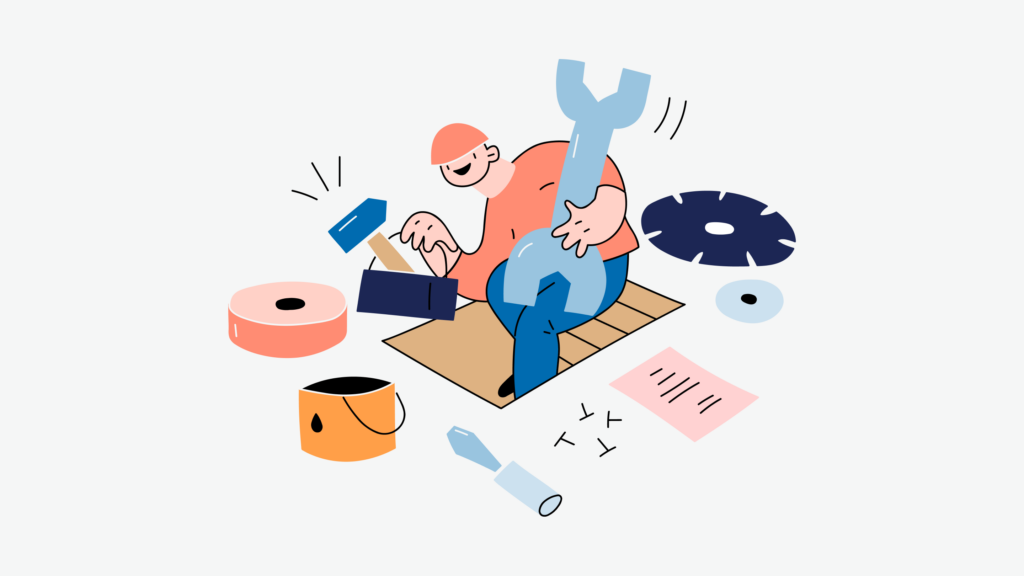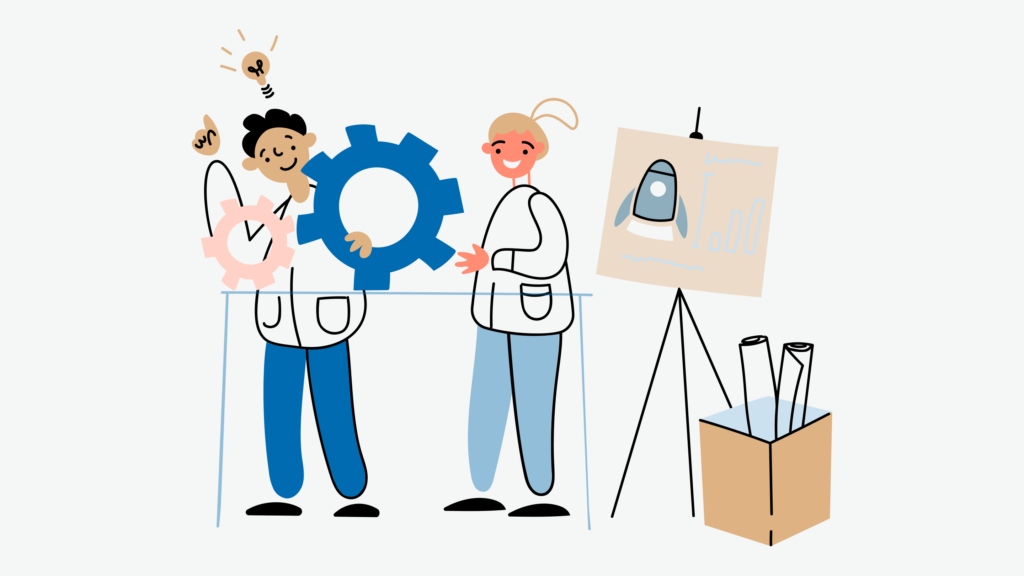Three Critical Questions to Ask When Considering Web Support & Maintenance

One of the most common questions from potential clients when discussing a website redesign or refresh is, “What does ongoing support and maintenance look like?”
The answer to that question depends on your response to three other critical questions.
Table of Contents

Question 1: How important is your website to the business?
Businesses of different sizes and types rely on their websites for various purposes. However, for most companies asking us this question, their websites are essential to their bottom line. Here’s why:
24/7 Presence
Your website is always on. Regardless of the time of day or hours of operation, your website provides customers visibility and access to your products and services.
Brand Credibility
When a user Googles your company, you want the first impression to instill confidence. It should establish a professional and trustworthy image for your organization.
Competitive Advantage
In a competitive market, your website sets your business apart from competitors. Your value proposition and offerings highlight what makes your company unique and give users a reason to choose you above others.
Lead Generation
Most of our clients’ websites are vital to their lead-generation strategy. Whether a potential customer finds your site through search engines, social media, or a referral, your website is a destination for prospects.
Convenience
According to a 2023 report from Salesforce, 72% of customer interactions are digital. Your website provides convenience and flexibility, allowing customers to research, compare, and make purchasing decisions at their own pace.

Question 2: How comfortable are you with the risks that come with an unmaintained website?
It’s an essential question because risk tolerance can vary significantly between companies (and between leaders). In this area, we’re highly risk-averse. The damage an unmaintained website can do to an organization FAR outweighs the cost of any maintenance plan you decide on. Here’s why:
Vulnerability to Hacking
Outdated or insecure websites lead to exploitable vulnerabilities. Often, this comes in the form of malicious code that quietly exploits website traffic until the code is eventually discovered. Much of the malware we’ve seen over the years targets only a portion of visitors, in order to avoid detection by website owners. Imagine finding out that your hard-earned leads have been forwarded to a malicious website designed to steal their data, a significant page on your site has been replaced with a statement announcing that your website was hacked, or pages promoting unrelated products have been added to your sitemap (it sounds unbelievable, but these are very common)!
Loss of Trust and Reputation Damage
If your website is vulnerable to security threats, it can erode customer trust in your brand and services, which most companies spend years establishing. Potential customers may hesitate to share personal information or make transactions, resulting in lost sales and a damaged reputation. If they can’t trust your organization to keep company security top-of-mind, how can they expect your organization to treat their sensitive information?
Negative Impact on SEO Rankings
Search engines prioritize websites that provide a fast, relevant, and secure user experience. An outdated website may not meet the technical requirements expected by modern search engines, resulting in lower rankings in search results and reduced organic traffic.
Falling Behind New Technology
As new technology standards are released, outdated websites must meet customer expectations and the competition. Performance standards such as Core Web Vitals (CWV) have driven broad change across all markets, causing website owners to prioritize user experience metrics.
Non-compliance with Legal and Industry Standards
Depending on your industry, legal and industry-specific standards may require regular updates and security measures. Not keeping your website software up to date could lead to non-compliance, resulting in penalties or legal consequences.

Question 3: What kind of partnership would you like to have?
Not all support is created equal. Finding a freelancer or small agency to provide monthly software updates and bug fixes is easy. For these services, they may charge you a low hourly rate, but it’s essential to consider what you’re likely sacrificing:
- Will they be proactive?
- Will they be strategic in recommending feature enhancements?
- Will they measure their work against the organization’s goals?
- Will they challenge you when you prioritize work that undermines website objectives?
- Will they partner with you to help find creative solutions to solve business problems?
- Will they advocate with you in internal conversations with business stakeholders?
- Will they use established design systems to align with your established brand and ensure design consistency?
- Will they develop according to industry best practices, including SEO and performance?
- Will they consider longevity as they extend the feature set and functionality on the site?
- Will they run visual regression and automated testing?
- Will they test critical pages of the site to avoid bugs or production errors before deploying code?
That’s a lot to digest. In our experience, individuals and smaller agencies have a tough time executing the points above with consistency. It requires organization, diligence, and diverse expertise that require skills typically found across larger teams.
Nonetheless, once you have a better idea of the type of partnership you’re looking for, including if or how they’ll work together with your internal IT or development teams, it will help you narrow down vendors. By narrowing your vendor list, you’ll quickly be able to focus on solutions.
Choosing a Support Solution for Your Organization

Although we customize each solution to each client’s needs, they generally fall into one of the following categories.
Solution 1: Essential Maintenance
This plan is the minimum support level we offer. It ensures that key technology on the site is kept up-to-date. Unmaintained technology (i.e., out-of-date plugins or ancient CMS versions) is much more challenging to improve if/when we add features on an ad-hoc or as-needed basis.
Essential Maintenance includes:
- Keeping site software up-to-date: regular updates, including the content management system (CMS), plugins/modules, and infrastructure. These updates often include bug fixes and security patches.
- Backups for redundancy: regular backups of your website to protect against data loss and potential mishaps. Automated, offsite backups are the standard, as well as a plan and drills for rapid restoration in case a recovery is necessary.
- Monitoring and maintaining security: investigating suspicious activity, maintaining SSL certificates, and implementing best practices harden your website against threats.
- Maintaining website performance: high uptime and reliable speed are essential for a website to have longevity. High-quality infrastructure (such as hosting) ensures the website stays performant as it ages.
Solution 2: Proactive Support
This option is the solution we typically recommend to customers. It’s a proactive approach to support and maintenance and provides the site with regular enhancements, feature additions, and strategic partners looking out for its (and your) best interests. We see websites as an essential tool for businesses and want to ensure that they stay up-to-date and secure and continue to grow and evolve with each client’s needs.
What does it mean to be proactive?
- Essential Maintenance: everything we do in our first solution: updates, backups, security, and performance maintenance.
- Regular improvements: beyond the basics, our team works with you to identify and prioritize work executed each month. Improvement cycles can increase or decrease in frequency, depending on how quickly you want to accomplish your goals. A smaller plan could include bug fixes and enhancements, while a larger one could consist of developing significant new features or functionality.
- Continuous testing: regular testing and correction of issues to safeguard ongoing quality. We use manual and automated testing solutions to maintain and improve quality over time. We leverage continuous testing to help ensure that bug-free features are released and that nothing compromises the user experience you’re working to enhance.
- Quarterly business reviews: to ensure that our partnership remains proactive and strategic, we meet quarterly to discuss your business, growth, changes, and innovation in your industry. This goal-oriented session lets us stay informed of your immediate and long-term goals and strategize opportunities that can impact the business.
Solution 3: Fractional Digital Team
If your organization is experiencing unprecedented growth or significant change, you may need more than proactive support. As your fractional digital team, we supplement your internal team’s expertise (or capacity) and act as an extension of your organization. Your website is a critical part of the business and harms operations if it loses stability. We can align with your best practices (e.g., participate in your agile rituals), have collaborative working sessions, and push your initiatives as our own.
- Proactive Support: everything we do in our second solution: Essential Maintenance, improvements on a regular cadence, continuous QA, and quarterly business goal and tactic reviews.
- Efficiency and production: if you’re under-staffed in your department but need to take on multiple initiatives, no problem. We’ll keep the work organized and drive momentum to meet expectations and objectives.
- Fast and specialized: our teams can rapidly respond to challenges with diverse skills tuned for the web. The team also gets support from COLAB team leads (i.e., senior team members outside your dedicated COLAB production team) to lend expertise to any unusual requirements.
- Dedicated partnership: our people are your people (for a percentage of their week). Beyond the typical design, development, and QA work we do daily, we bring a depth of cross-industry experience. We often support interdepartmental discussions, research/innovation initiatives, marketing or omni-channel campaigns, and provide fresh perspectives to internal challenges. Treat us as you would a colleague; we’re working toward the same goals.
Comparing Options
If you’re comparing what you get, we’ve attempted to highlight some of the most frequently requested features and how they align with each plan:
| Features | Essential Maintenance | Proactive Support | Fractional Digital Team |
|---|---|---|---|
| CMS Software Updates | ✅ | ✅ | ✅ |
| Plugin/Module Updates | ✅ | ✅ | ✅ |
| Site Backups | ✅ | ✅ | ✅ |
| Version Control | ✅ | ✅ | ✅ |
| SSL Security | ✅ | ✅ | ✅ |
| Uptime Monitoring | ✅ | ✅ | ✅ |
| Accessibility Review | Quarterly | Monthly | Ongoing |
| Performance Review | Quarterly | Monthly | Ongoing |
| Proactive Performance & Accessibility Remediation | – | ✅ | ✅ |
| Bug Backlog and Work Down | – | ✅ | ✅ |
| Goal/Analytics Review and Recommendations | – | ✅ | ✅ |
| Iterative Design Improvement | – | ✅ | ✅* |
| Iterative Feature Development | – | ✅ | ✅* |
| Quarterly Business Reviews | – | ✅ | ✅ |
| Technical SEO Review | – | On request | ✅ |
| Automated Quality Assurance | – | On request | ✅ |
| Continued Product Roadmap Development | – | – | ✅ |
| Digital Maturity Growth Plan | – | – | ✅ |
| Institutional Knowledge & Documentation | – | – | ✅ |
| Increased Specialist Team Member Involvement | – | – | ✅ |
| SME Support in Internal Discussions | – | – | ✅ |
| High-touch Communications & Partnership | – | – | ✅ |
Our Recommendation

For most of our clients, we recommend Proactive Support because it consistently yields the best business results. This plan is the standard solution for organizations that rely on their website to drive their marketing and sales programs. Often, this solution comes on the heels of a website redesign, where the product roadmap of desired features extends beyond the initial build.
In that instance, our team continues to develop new features over time, ensuring the website can easily support changing business priorities and new organizational initiatives. In addition, after the initial launch, we leverage live insights (through analytics data and collected user feedback) to develop additional site features alongside newly uncovered user needs. This work may include further optimizing SEO, site performance, lead conversion, and enhancements to support the user journey.
If funding constraints prohibit a proactive and iterative approach, establishing a Essential Maintenance plan to protect your investment is the next best solution. This plan assures that the website will continue to operate smoothly. Essential Maintenance preserves longevity but doesn’t proactively address new or changing organizational priorities. Sometimes, this plan acts as a stop-gap between the launch of a redesign and the start of a new fiscal year.
If these general plans don’t fit your needs, let’s get creative. Don’t let budget limitations prevent you from protecting your most important marketing asset.

